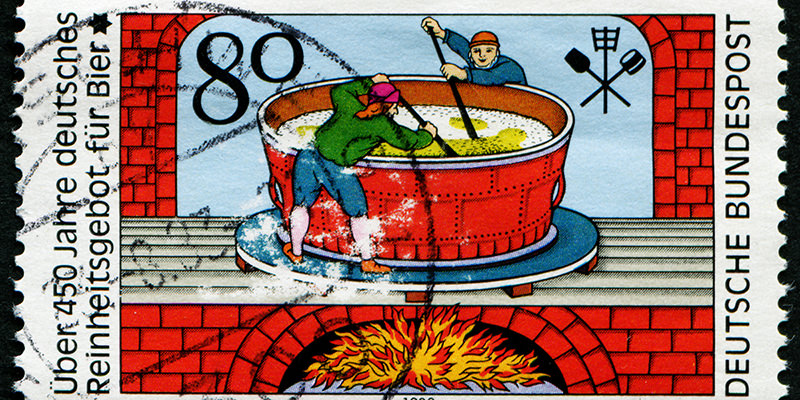We know what you’re thinking. It’s the 500 year anniversary of the Reinheitsgebot. What the hell are you gonna get everybody?
Before you go into Walgreens demanding to know where their “German Beer Purity Law” Hallmark section is, a little background. The Reinheitsgebot, which was written in 1516 by two Bavarian dukes, was a significant pivot-point in the rich, sudsy history of beer—which, as we’ll find out, wasn’t always made the way it is today.
The law is extremely simple, stating that beer can only be made of four ingredients: water, barley, hops, and yeast. Actually, water, barley, and hops. (We’ll get to the absence of yeast in a second.) Per Wired.com, the English translation only states that “in future in all cities, markets and in the country, the only ingredients used for the brewing of beer must be barley, hops, and water.”
Nowadays, of course, the ingredients of beer are extremely varied: oatmeal, grapefruit, chili peppers, espresso, the list goes on. But the backbone of beer was, for a time, a legally established thing in Bavaria (it didn’t apply beyond the region until 1871). Why those three ingredients, and no mention of yeast? Well, the action of yeast wasn’t quite understood until the 18th Century when Louis “My Name Will Be Forever Associated with Milk” Pasteur discovered its role in fermentation.
That doesn’t mean 16th Century Germans, or people centuries before them, didn’t understand that yeast existed. They simply hadn’t explained its chemical action, why—or really how—it was a player in the magic of fermentation. So while yeast isn’t mentioned in the Reinheitsgebot, it’s largely understood that yeast wasn’t really “unknown”. It was simply, typically harvested from batch to batch, derived initially from the ambient environment (whereas today a brewer can get a specific yeast strain to create particular flavors, and god bless science for that).
As for restricting the grains to malt, that seems to have been more on behalf of bread bakers than any ideas about what beer should taste like. In fact, the purity law was largely financial, which is less romantic than the idea that Germans loved their beer so much, they made up rules for it. Since 16th Century agriculture wasn’t what it is today—which also means it was free of GMOs and heavy government subsidies—commodities like wheat and rye had to be protected. At the time, they were much more important as food ingredients than beer ingredients (unlike barley, which bestoweth upon us much delicious alcohol to this day).
The Reinheitsgebot was still a significant pivot point in beer production, one of the first regulatory measures in a world of beer that’s still struggling to define itself (e.g. what is exactly is “craft” again?). But there’s dissent as to whether the law—which actually became a German tax law in 1919—actually applies in the world of craft beer. Gunther Hirschfelder, a professor in the history of beer at the University of Regensburg, says today it’s mostly “a marketing tool” (although it did evolve to re-incorporate ingredients like wheat and rye, as well as mentioning yeast specifically as part of the basic formula).
Meanwhile, yes, craft beer be crazy, but mostly because brewers have mastered the basics laid out in the Reinheitsgebot and are now playing a protracted, highly entertaining, and generally delicious game of brewer one-upsmanship. And they’re able to do that because one day 500 years ago, some Bavarian dukes laid out the foundational recipe.
And, yes, penalties.
“Whosoever knowingly disregards or transgresses upon this ordinance, shall be punished by the court authorities’ confiscating such barrels of beer, without fail.”
Meaning, yeah, we should all pour some beer out on the curb for those fallen barrels this Quincentennial.
Header image via Galyamin Sergej / Shutterstock.com

